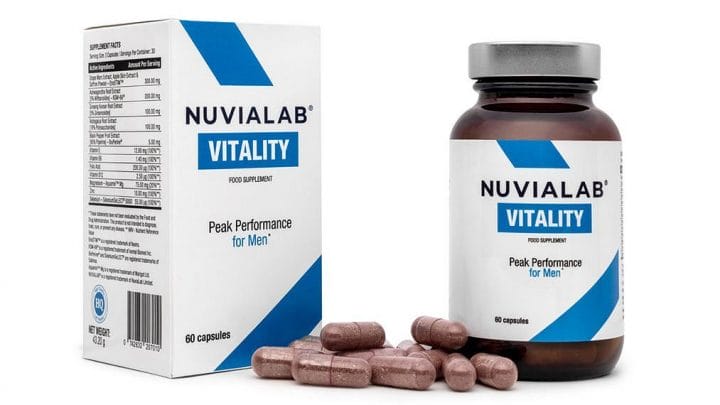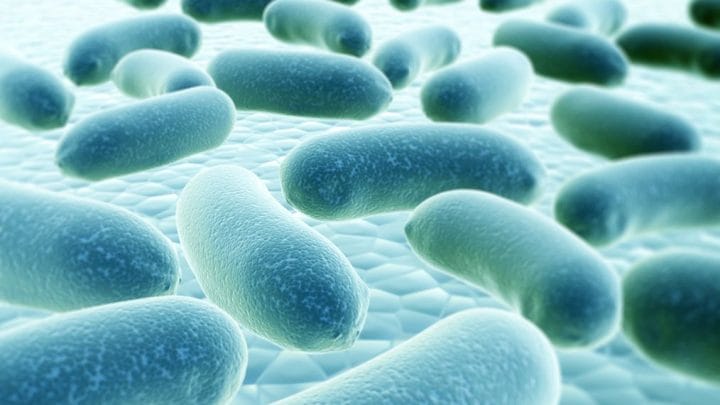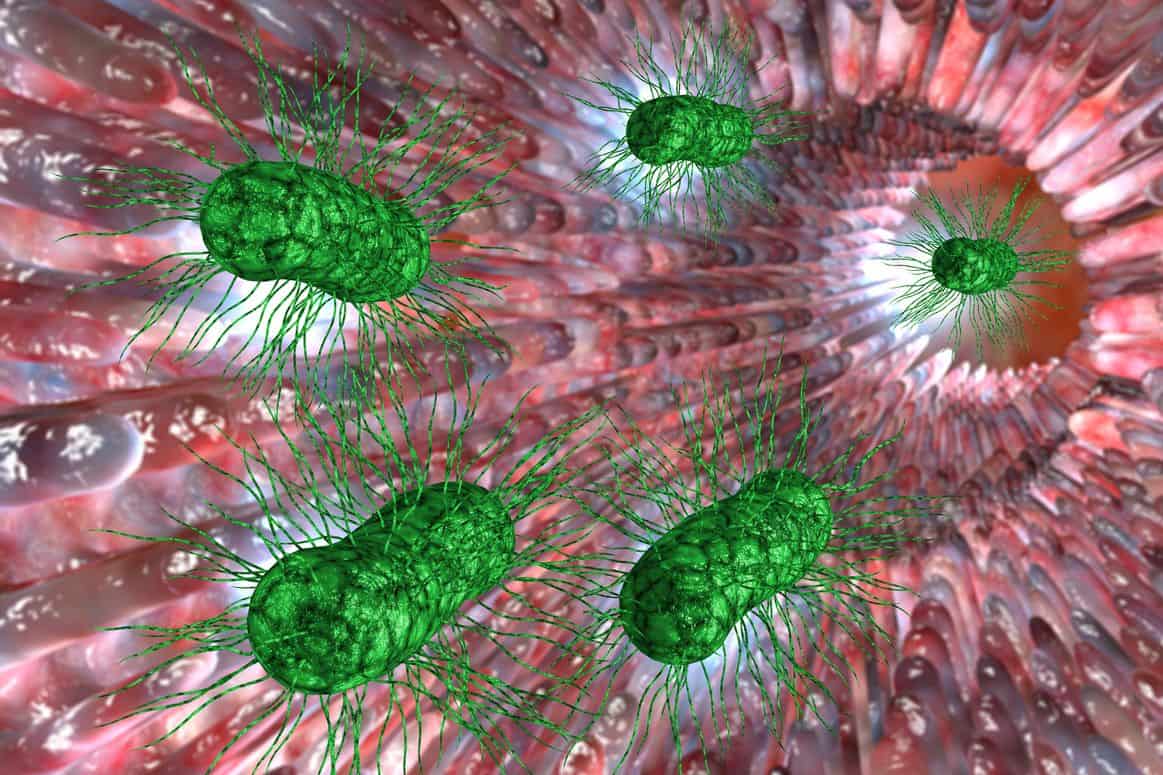
Diet in sibo – how to treat it?
SIBO – otherwise known as bacterial overgrowth syndrome of the small intestine – is a disorder characterized by an increase in the bacterial flora of the small intestine or detection of microorganisms that do not normally live in our intestines. Symptoms that may signal that something wrong is going on in the intestines are:
- abdominal pain,
- abdominal bloating,
- headaches,
- food indigestion,
- fatigue.
All symptoms of SIBO depend on how long the disease has been going on and how severe it is. SIBO is also very often confused with IBS, called irritable bowel syndrome. Excessive bacterial overgrowth increases very often after consumption of pickles, raw vegetables and fruits, probiotics, as well as prebiotics, i.e. food for bacteria. Thanks to these products, among other things, we can distinguish between bacterial overgrowth syndrome and IBS.
Contents
Diagnosis and treatment
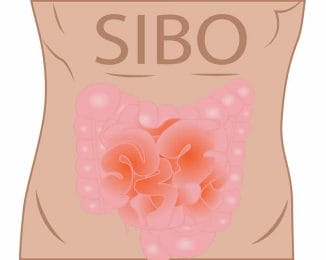
People who are diagnosed for bacterial overgrowth should be primarily under the constant care of an internist, gastrologist or gastroenterologist, who will be responsible for ordering the appropriate tests and, if necessary, will propose treatment. Very often in this type of cases, a hydrogen breath test or a hydrogen-methane breath test is ordered. Respiratory testing is a test that can only be carried out inpatient at a place that specialises in diagnosing this type of condition. The duration of the test can be up to 3 hours. The test involves measuring hydrogen in exhaled air after ingesting a solution of a substance that is broken down by bacteria – sugar. The testing time is performed in intervals, in which the levels of exhaled hydrogen are checked, thanks to which we can determine what the activity of bacteria in the abdominal cavity is. The human body naturally at rest does not secrete hydrogen, this happens only in the process of fermentation thanks to anaerobic bacteria. During the examination, you may experience abdominal pain, bloating or loose stools. It is also worth remembering about proper preparation for the test, which is essential and key to obtaining a correct result. Here we should take into account:
- seven days before the examination, laxatives and prokinetic agents should be eliminated under medical supervision.
- three days before the examination probiotics should be stopped.
- one day before the examination, persons suffering from constipation should eliminate from their diet products containing high fermentation coefficient, that is: complex carbohydrates, cow’s milk and its products as well as fruit juices. However white rice, wheat bread, meat, fish and eggs are allowed in this period.
- Forbidden products are also: onion, leek, garlic, cabbage, beans, green peas, as well as any pickled or pickled vegetables,
- the last meal should be eaten 14 hours before the examination. Make sure it is low in dietary fiber. After dinner, only drinking water is allowed until the examination,
- it is important not to smoke or chew gum 2 hours before the test, as this can also affect the test result.
On the day of the test:
- you should brush your teeth thoroughly, while people with dentures, must not use glue for them,
- It is recommended that you drink a glass of warm water,
- Before the examination, no soluble vitamins, laxatives or antibiotics may be taken,
- physical activity should be kept to a minimum.
When a positive result is obtained in the exhaled air, which is shown on the chart, the doctor prescribes the appropriate antibiotic therapy, which is applied under his strict control. The method is fast and effective, and if we follow it as prescribed by the doctor antibiotic therapy will last from 2 to 3 weeks. The treatment should use a product that will work in the intestines and not go into our bloodstream. The therapy should not only consist of SIBO treatment, but also a change in dietary rules such as the introduction of a low fodmap diet. It should be introduced under strict supervision of a dietician, because its rules are complicated and rigorous. It is also worth eliminating probiotics from the Lactobacillus genus, because they lead to the intensification of the disease symptoms. Any probiotic and prebiotic therapy should be consulted with the attending physician.
Diet in diagnosed bacterial flora overgrowth – SIBO.
During the treatment, a proper diet is very important, which will reduce the symptoms of the disease. It is important to remove from the diet ingredients with a high content of fodmap, that is, products that stimulate fermentation processes in the intestines. Recommended here are:
- SCD diet – or specific carbohydrate diet, which recommends minimizing carbohydrates such as starch, poly- and disaccharides. Simple sugars are not included,
- the GAPS diet – is derived from the SCD diet, but is even more restrictive,
- Dr. Siebecker’s protocol – these are recommendations based on the SCD diet and low fodmap. The elimination diet recommended by Dr. Siebecker recommends starting the process with the SCD or GAPS diet and then expanding it to include fodmap diet products. The maximum duration of the diet should be two months,
- low fodmap diet – this is the most popular dietary model that minimizes bacterial growth in the small intestine. The fodmap diet involves eliminating from the diet plan products with a high fermentation rate, namely oligo -, di-, monosaccharides and polyols. These belong to products containing short-chain carbohydrates that are poorly absorbed but rapidly fermentable with high osmotic pressure, which include: dairy products, some legumes, sweeteners e.g. These include: dairy products, some legumes, sweeteners such as xylitol, mannitol or erythritol, cereal products – wheat and garlic and onions or highly processed meat.
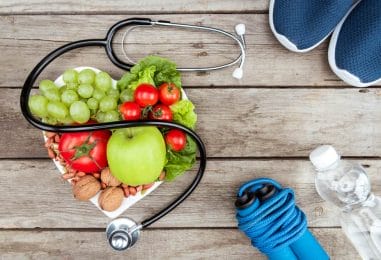
In case of irritable bowel syndrome or other disorders of the digestive system, i.e. bacterial overgrowth syndrome, products rich in FOPMAP may lead to exacerbation of the disease symptoms. This is because they enter the large intestine in an unchanged form. Osmotic properties are responsible for increasing water absorption in the small intestine. This phenomenon leads to a stretching of the intestinal walls, which can cause, among other things, abdominal pain. From the excess of bacteria in patients diagnosed with bacterial overgrowth there appears an excess of gas in intestines what causes discomfort and bloating.
SIBO what to eat? The sibo diet was prepared by the Australian University and is characterized by a low presence of fermentable foods, i.e. oligo-, di-, monosaccharides and polyols in the menu. The dietary plan should be rich in dietary fiber, essential for proper functioning of the intestines, as well as proteins, fats, carbohydrates, vitamins and minerals. The low diet is important in SIBO therapy and is divided into three stages that indicate what foods to eat and what to avoid:
1. stage I: elimination diet
Its duration is from 2 to 6 weeks. During this time, we should exclude high fodmap foods from our diet and replace them with low fodmap foods:
Vegetables:
- high in fodmap: onions, asparagus, artichokes, broccoli, cauliflower, patisons, beets, leek, Brussels sprouts, garlic, cabbage, pulses, i.e. chickpeas, lentils, green peas, soybeans and beans,
- low fodmap: tomatoes, carrots, Chinese cabbage, peppers, cucumbers, eggplant, celery, corn, squash, lettuce, pumpkin, chives, sweet potatoes.
Fruits:
- high in fodmap: apples, pears, mango, watermelon, plums, apricots, nectarine, peaches, canned fruit, dried fruit,
- low fodmap: tangerines, kiwi, bananas, grapes, grapefruit, oranges, blueberries, lemons, raspberries, strawberries.
Dairy products:
- high fodmap: fine mascarpone or ricotta cheeses, quark, yoghurt, buttermilk, condensed milk, cow’s milk, sheep’s milk, goat’s milk, whipped cream, sour cream,
- low fodmap content: camembert cheese, brie cheese, hard cheeses such as Swiss, cheddar, mozzarella, parmesan, margarine, butter, lactose-free dairy products.
Cereals and cereal products:
- high in fodmap: wheat bread, wheat products, rye, wheat breakfast cereal with dried fruit, wheat pasta,
- low fodmap: spelt flour, gluten-free bread, spelt sourdough bread, rice flakes, oat flour, gluten-free pasta, oatmeal, quinoa, rice.
Nuts and seeds:
- high in fodmap: cashew nuts, pistachios,
- low in fodmap: almonds, walnuts, pecans, peanuts, macadamia nuts, pine nuts, sesame seeds, pumpkin seeds, sunflower seeds.
Others:
- high in fodmap: honey, agave syrup, glucose-fructose syrup, sweeteners like mannitol, maltitol, erythritol, xylitol, sorbitol, sugar-free products with sweeteners, soy milk,
- low fodmap content: maple syrup, granulated sugar, stevia, aspartame, peanut butter, almond milk, rice milk.
2) Phase II – reintroduce fodmap products
The duration of this stage is 8 to 12 weeks. Stage II involves reintroducing high fodmap foods into your diet in small amounts. It is one of the most important moments during the treatment, because a new product should be introduced once every 3 days and we should observe if the symptoms of the disease don’t appear again. Keeping a diary, in which we describe exactly what we ate, our symptoms and how we feel, is very effective here. SIBO diet is very restrictive and during its expansion we should take into account several factors:
- When expanding the diet we should introduce high fodmap products in small amounts, and ideally we should choose one fodmap product once every 3 days, i.e. ifIf we want to introduce fructose, it’s better to choose honey than fruit, because fruit is rich in other fodmap values and not only in fructose, e.g. fructose. Fruit is rich in other fodmap values and not just fructose such as honey,
- If you want to introduce fructose products, it is better to choose honey than fruit, because fruit is rich in other fodmap values than fructose alone, e.g. honey,
- It is important to introduce products in terms of quantity, i.e. it is worth starting with small portions, and if our body responds well to the treatment, the portions should be increased.
Stage III – personalization
This stage consists of creating an individual diet, preferably under the supervision of a qualified dietician, who has experience in this type of cases. The diet for SIBO should be rich in products that have been tested and identified as not causing gastrointestinal symptoms. The most common causes of the disease are due to a poor diet, but when following a personalized diet once in a while you can introduce ingredients that triggered the symptoms of the disease, but these should not be large amounts.
Conclusion:
- When following a diet that involves minimizing the bacteria in the small intestine, it is worth remembering that the elemental diet is temporary and the first stage should not be longer than 6 weeks so as not to lead to nutritional deficiencies. It is also worth noting that short-chain carbohydrates are prebiotics, which have a lot of food leftovers and they are an excellent food for bacteria living in the intestines. Prebiotics nourish both pathogenic bacteria and pro-health bacteria. Adequate numbers of health-promoting bacteria benefit the intestines and eliminate irritable bowel syndrome, malabsorption, or symptoms that accompany SIBO,
- The diet should be personalized so that it eliminates all ingredients that cause any intestinal discomfort.
- The diet should be composed by a certified dietitian so that it does not lead to unwellness in the person’s body, but minimizes the symptoms of irritable bowel or bacterial overgrowth as much as possible.
Sources:
- Gulbicka P, Grzymisławski M. Abdominal bloating – the most common causes and management. Zdr. Publ. 2016, 6, 1,
- Gąsiorowska J, Czerwionka-Szaflarska M. Small intestinal bacterial flora overgrowth syndrome versus irritable bowel syndrome. Prz Gastroenterol 2013; 8 (3),
- Szczeklik A., Gajewski P. Interna Szczeklika: bacterial overgrowth syndrome, 2018,
- M. Włochal, M. Grzymisławski, New trends in nutritional treatment for inflammatory bowel disease, “Nursing and Public Health” 2016, vol. 6, no. 2.


